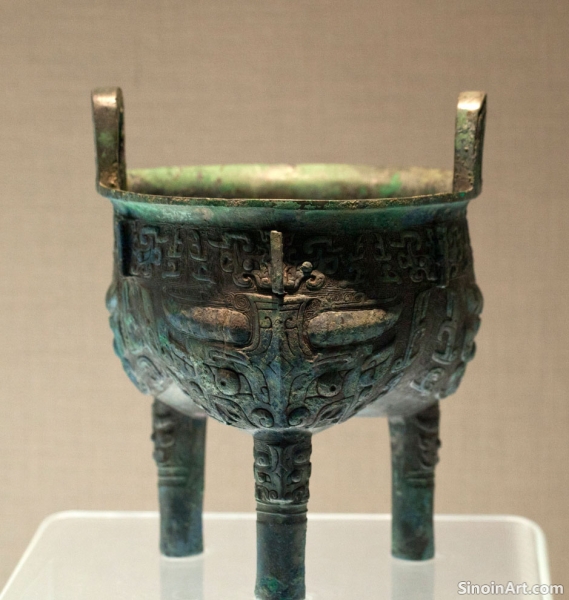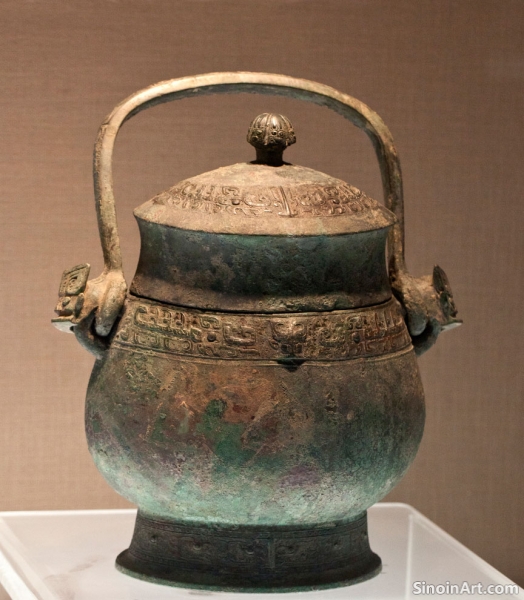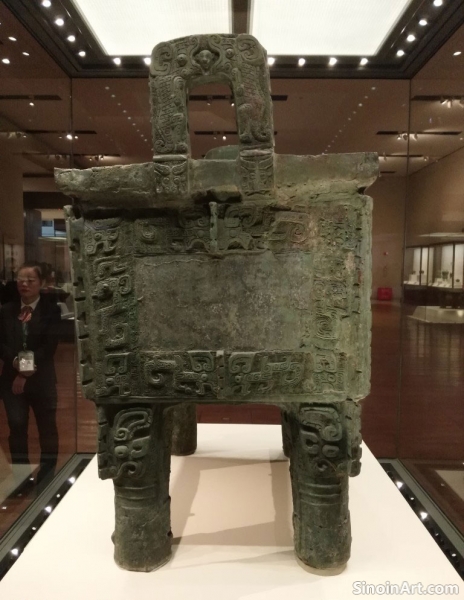The Significance of the “Ding” in Ancient Chinese Culture: Ritual, Power, and Symbolism
|
The ding (鼎), a large three- or four-legged cauldron, holds a special place in ancient Chinese culture, serving as a powerful symbol of ritual practice, social status, and political authority. The ding, which is often one of the most notable pieces of bronze ware, has a special place in the Chinese understanding of their own history.  The ding was primarily used in ancestral rites, where it served as a container for offering food and wine to the spirits of deceased ancestors. The ding was a sacred vessel that helped connect the world of the living with the world of the dead. The use of the ding was reserved for those who held positions of high status.  The number and size of the ding owned by a family or a ruler directly reflected their social status and political influence. The ding became a potent symbol of power and legitimacy, and their possession conferred both power and prestige. The ownership of the ding was one of the most important status symbols of the era.  The designs and inscriptions on the ding, often complex and elaborate, also contributed to their symbolic significance. The symbols and inscriptions often included the names of ancestors and their relationship to the present, which helped to emphasize family and lineage ties. The inscriptions and symbols helped to connect the past to the present. The ding remains one of the most iconic and recognizable symbols of ancient Chinese culture, with its enduring legacy representing the core values and beliefs of the era. The ding has become a symbol that embodies power, authority, and ancestral ties, and its meaning has resonated throughout Chinese history. |
Tag : Chinese ding, bronze vessel, ritual object, ancient symbolism, power symbol
Related information
- Preserving Chinese Bronze Ware: Challenges and Methods of Conservation
- The Use of Bronze in Ancient Chinese Writing: Brushes, Ink Stones, and Calligraphy Tools
- The Enduring Appeal of Chinese Bronze Ware: Timeless Art and Cultural Legacy
- The Use of Bronze in Ancient Chinese Water Management Systems: Irrigation and Hydraulic Engineering
- The Use of Bronze in Ancient Chinese Textile Production: Tools and Decorative Elements
This article discusses the challenges and methods of conserving Chinese bronze ware, highlighting the vulnerability to corrosion, the specific techniques used for cleaning and preservation, and the overall importance of safeguarding these artifacts for the future.
This article explores the use of bronze in creating writing tools, highlighting brush rests, ink stones, and writing knives, and demonstrating the connection between bronze and the art and practice of writing in ancient China.
This article emphasizes the enduring appeal of Chinese bronze ware, highlighting its timeless beauty, its blend of function and symbolism, its ability to connect us with the ancient world, and the importance of continued study and preservation for future generations.
This article explores the use of bronze in ancient Chinese water management systems, highlighting its role in irrigation, hydraulic engineering, and the creation of tools and components that helped to control and manage water resources for agriculture.
This article explores the use of bronze in ancient Chinese textile production, highlighting its role in creating tools like hooks and needles, decorative elements like buckles, and revealing the interplay of metalworking and textile craftsmanship.